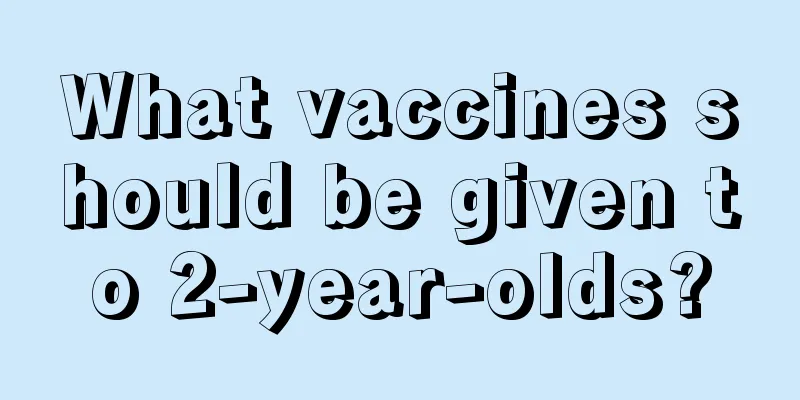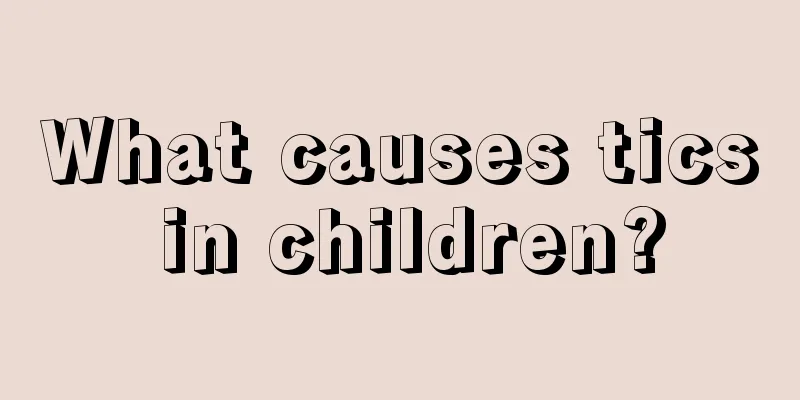What vaccines should be given to 2-year-olds?

|
Vaccination is very important for two-year-old babies. This can effectively reduce the incidence of various diseases, especially for some bacterial and viral infections. Therefore, when your child reaches this age, you must get vaccinated, and you may need to get different vaccines regularly to prevent different diseases. It is made by selecting bacteria, viruses, rickettsia, spirochetes, etc. with good immunogenicity, culturing them artificially, and then killing them by physical or chemical methods. This vaccine loses its ability to reproduce but retains its immunogenicity. After entering the human body, killed vaccines cannot grow and reproduce, and their stimulation on the body is short-lived. To obtain lasting immunity, repeated vaccinations are required. 2. Live attenuated vaccines Live vaccines or attenuated live vaccines are made by using artificial directed mutation methods or by screening out live microorganisms with reduced virulence or essentially non-toxicity from nature. Commonly used live vaccines include Bacillus Calmette-Guérin (BCG, tuberculosis), measles vaccine, polio vaccine (polio), etc. After vaccination, the virus has the ability to grow and reproduce in the body, which is close to natural infection and can stimulate the body's lasting immunity to pathogens. Live vaccines require smaller doses and provide longer duration of immunity. The immune effect of live vaccines is better than that of dead vaccines. 3. Toxoid After being treated with formaldehyde, the extracellular toxin loses its toxicity but still retains its immunogenicity, becoming a toxoid. Adding appropriate amount of aluminum phosphate and aluminum hydroxide can produce adsorbed and refined toxin. It is slowly absorbed in the body and can stimulate the body for a long time, produce higher titer antibodies and enhance the immune effect. Commonly used toxins include diphtheria toxoid, tetanus toxoid, etc. Artificial passive immunization agents 1. Antitoxin 2. Antibacterial and antiviral serum 3. Immunoglobulin 4. Specific immunoglobulin Both artificial active immunity and artificial passive immunity can increase the body's disease resistance, but the latter is short-lived and is mainly used for treatment and emergency prevention. New vaccines 1. Subunit vaccine 2. Combined vaccines 3. Synthetic peptide vaccines 4. Genetically engineered vaccines (1) Recombinant antigen vaccine (2) Recombinant vector vaccine (3) DNA/RNA vaccine (4) Transgenic plant vaccine (1) Hepatitis B vaccine. Generally, the baby is given an injection within two days after birth, at one month, and at six months, with a booster injection every three to five years. The most commonly used hepatitis B vaccine is a genetically engineered hepatitis B vaccine, which can be used to prevent infection with all known subtypes of hepatitis B virus. (2) BCG. BCG vaccination can prevent tuberculosis. BCG can be administered to most infants after birth. If not administered at birth, it can be administered within 2 months. Revaccination should be performed at the ages of 3, 7, and 12 if the tuberculosis test is negative. (3) Polio sugar pills. Oral polio sugar pills can prevent infantile paralysis, which is medically known as "poliomyelitis." The vaccine currently used is the white trivalent mixed vaccine, which is first taken at 2 months after birth, and then twice a month apart, for two consecutive doses, and a booster dose at 4 years old. (4) DPT mixed preparation. Injection of DTP combined preparation can prevent whooping cough, diphtheria and tetanus. These three diseases can seriously threaten children's health and life. Vaccination is usually carried out when the infant is 3 months old. The initial vaccination requires three injections, each injection is 4 to 6 weeks apart, and the child should be revaccinated once when he is 1 to 2 years old. |
<<: What to do if your child is caught in the wind
>>: My 2 year old baby can't speak
Recommend
Is rice noodles good for children?
When the baby is about 5 months old, many mothers...
Why does my child urinate less?
Children have a faster metabolism and should urin...
What are the treatments for rhinitis in children?
Young children's physical development is not ...
How to clear phlegm from baby's throat
Every child is the apple of his parents' eyes...
Reasons why babies don't sleep
In fact, we still need to pay more attention to s...
Winter health care for children
As the saying goes, a year's plan starts with...
Baby's eczema heals and then recurs
One of the characteristics of eczema is that it i...
Why do children have abdominal effusion after surgery?
We all know that some serious diseases require su...
Baby has a fever and farts very smelly
Baby fever is a very common phenomenon for parent...
Thick blisters on the newborn's arm after vaccination
The vaccination for newborns is actually the BCG ...
What should I do if my child has chronic nephritis?
Although kidney disease and stomach disease are n...
What should children pay attention to when learning to swim?
Today's parents all hope that their children ...
What to do if children have toothache
Children's teeth are relatively fragile. If t...
Why do children have sparse teeth?
Nowadays, children have more and more dental prob...
Five tips to improve your child's intelligence
Smart babies are not born with high IQs. In addit...









